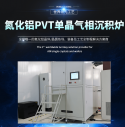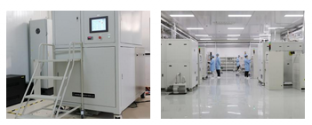From our esteem member
@Oldschool, seems like a Chinese EUVL is on the Horizon with SSMB, no question about it, collaborating the post of another esteem members
@tokenanalyst , when? with research being done on optics and materials using SSRF, I'll say sooner with 2026/2027 as a conservative date.
Junior Member
Registered Member
19 minutes agoNew
Shanghai has a synchrotron facility
recently it posted 2 post doctoral research jobs relating to sub-7nm IC research application with synchrotron facility
中国科学院上海高等研究院(下称高研院)坐落于上海市浦东新区张江科学城核心区,是一所年轻的多学科交叉的综合性科教机构。高研院主要以先进光源大科学装置的研制、建设和运行为核心,开展加速器科学、光子科学、能源科学与信息科学领域的原始创新研究和关键
Shanghai Institutes for Advanced Study, Chinese Academy of Sciences will recruit 2 postdoctoral researchers in June 2022
Source: Science Talent Network
Release time: 2022-06-15
Located in the core area of Zhangjiang Science City, Pudong New Area, Shanghai, the Shanghai Institutes for Advanced Study of the Chinese Academy of Sciences (hereinafter referred to as "Advanced Research Institute") is a young multidisciplinary comprehensive scientific and educational institution. The Advanced Research Institute mainly focuses on the development, construction and operation of advanced light source large scientific devices, carries out original innovation research and key core technology research and development in the fields of accelerator science, photon science, energy science and information science, supports cutting-edge scientific research, and provides core technologies And integrated technology solutions, responsible for the operation and opening of national large scientific infrastructure such as Shanghai Synchrotron Radiation Light Source and National Protein Facility (Shanghai).
Due to work needs, we are recruiting 2 postdoctoral researchers:
1. Recruitment requirements and conditions:
(1) Position 1 (1 person):
Research direction: synchrotron radiation research on two-dimensional material interfaces and energy information devices.
Participate in projects or topics after entering the station: synchrotron radiation characterization and application research of Sub-7nm advanced integrated circuit devices; research on dynamic electrochemical process of layered materials based on synchrotron radiation in situ X-ray spectroscopy technology; two-dimensional metal chalcogenide reversible storage Multidimensional in situ synchrotron radiation studies of potassium interface and structural properties, et al.
Work content:
1. Synchrotron radiation characterization and application of two-dimensional material structure interface;
2. Development of high spatiotemporal resolution synchrotron radiation characterization devices and technical methods for energy information material devices;
3. Research on the construction and mechanism of high-performance energy information devices based on two-dimensional materials;
4. Other work arranged by the instructor.
Admission requirements:
1. Support the party's line, principles and policies, love the motherland, abide by the law; have the scientific spirit of continuous innovation, abide by academic ethics and scientific research integrity, be honest and self-disciplined, have a decent style of study, and be of good character; the age should be under 35 years old, and a doctorate degree is generally accepted. not more than 3 years;
2. Doctorate degree in physics, energy information or related professional background;
3. Publish 3 or more SCI articles as the first author during Ph.D., at least one first-author article has an impact factor greater than 15, and the sum of the first-author article impact factor during Ph.D. is greater than 30 (the three requirements must be met at the same time);
4. The research background of two-dimensional energy material devices and synchrotron radiation is preferred.
(2) Position 2 (1 person):
Research Interests: Synchrotron X-ray Diffraction Characterization of Interfaces of Novel Mass Transfer and Communication Devices.
Participate in projects or topics after entering the station: development of high-throughput synchrotron radiation characterization technology for integrated circuit materials; research on electronic structure of magnetic topological materials; in-situ synchrotron radiation X-ray diffraction research on chemical vapor deposition doped/intercalated graphene structures.
Work content:
1. Synchrotron radiation solid-liquid, liquid-liquid mass transfer interface diffraction characterization device and technology development;
2. Synchrotron X-ray diffraction study on interface structure of new information and communication devices (optical communication, ion mass transfer).
Admission requirements:
1. Support the party's line, principles and policies, love the motherland, abide by the law; have the scientific spirit of continuous innovation, abide by academic ethics and scientific research integrity, be honest and self-disciplined, have a decent style of study, and be of good character; the age should be under 35 years old, and a doctorate degree is generally accepted. not more than 3 years;
2. Doctorate degree in physics, optical information or related professional background;
3. Publish 3 or more SCI articles as the first author during Ph.D., at least one first-author article has an impact factor greater than 15, and the sum of the first-author article impact factor during Ph.D. is greater than 30 (the three requirements must be met at the same time);
4. A background in research work related to synchrotron radiation X-ray diffraction is preferred.
2. Treatment:
In accordance with the relevant standards of the Shanghai Institute for Advanced Study.
3. Contact information:
Interested candidates please send your resume to the following contact information (please indicate "name + graduate school/work unit + postdoctoral application" in the subject of the email), while the number of applicants is full.
Contact: Mr. Zhu
Email:
[email protected], CC
[email protected]
Website:
Address: No. 99, Haike Road, Zhangjiang Hi-Tech Park, Pudong, Shanghai
Postcode: 201210
The information comes from the Internet. If there is any change, please refer to the original publisher.
Source link:
中科院上海高研院征才,依托上海光源大科学装置,发力7纳米以下节点先进集成电路研发。
laoyaoba.com
An add on from
@tokenanalyst previous post
Shanghai Institute of Advanced Research, Chinese Academy of Sciences recruits talents to develop advanced integrated circuits with nodes below 7 nanometers
2589
Source: Aijiwei
#photoresist#
#Shanghai Light Source#
17 hours ago
According to the news of Micronet, the Shanghai Institutes for Advanced Study of the Chinese Academy of Sciences recently released a post-doctoral researcher recruitment notice. After entering the station, the candidates will participate in the synchrotron radiation characterization and application research of Sub-7nm advanced integrated circuit devices.
According to public information, "Synchronous Radiation Characterization Technology and Application for Sub-7nm Advanced Process Node Integrated Circuit Core Devices" is the 2021 project of the national key research and development plan "Frontier Research on Large Scientific Devices", led by Shanghai Advanced Research Institute, and the project is implemented. With a cycle of 5 years, this job posting may show that the R&D project has been substantially started.
According to information from Nankai University, Luo Feng, a chair professor of the school, has also undertaken corresponding topics and carried out photoresist synthesis and etching evaluation of extreme ultraviolet lithography technology. The company's partners include SMIC's Northern Integrated Circuit Innovation Center and Beijing Superstring Memory Research Institute. (Proofreading/Aileen)





